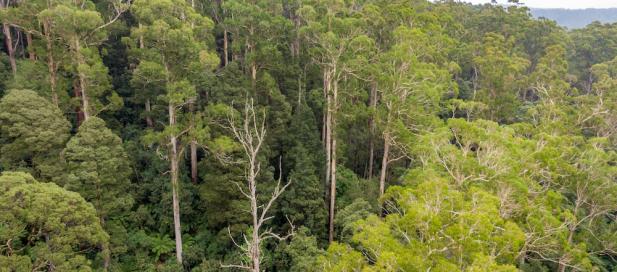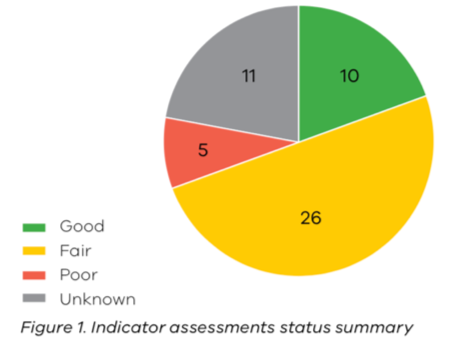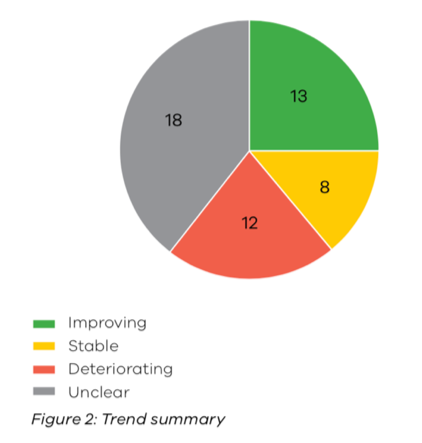
A comprehensive report card on the health of Victoria’s forests State of the Forests 2018 Report (SoF) has been released by the Victorian Commissioner for Environmental Sustainability, Dr Gillian Sparkes. The report assesses the health of Victoria’s 3.2 million hectares of State forests and 3.7 million hectares of forested parks and reserves. “We wanted to develop a report that would monitor progress to achieve sustainable forest management,” says Dr Sparkes. “The report also includes recommendations to government that aim to improve the state of our forests, better protect biodiversity and address knowledge gaps.”
The report looks at 52 indicators (including 7 sub-indicators) that measure the health of Victoria’s forests, including biodiversity – native animals and plants. The indicators also encompass metrics around long-term socio-economic benefits, the productive capacity of forest ecosystems and the health of our water catchments.


Source: State of the Forests 2018 Report
For 52 indicators, 11 indicators were assessed as ‘good’; half of the indicators were ‘fair’ and approximately one-third were rated as ‘poor’ or ‘unknown’.
The current suite of indicators was established more than ten years ago. “A review and update of these indicators would better reflect modern forest science and the needs of local communities,” says State of the Forests 2018 Report Lead Scientist Dr Kangmin Moon. “We have to address the knowledge gaps,” he says. New issues and new technologies such as spatial information capabilities have emerged since the previous SoF was released in 2013.
The State of the Forests 2018 Report is a holistic snapshot of the state of our forests aligned with United Nations Sustainable Development Goals (SDGs), the Montreal Process and respect to the world’s oldest living Aboriginal culture. The report also assesses the State’s forests in the context of Aboriginal science and the plants, animals and places that have both symbolic and practical value to Aboriginal Victorians.
State of the Forests 2018 Report recommendations respond to the need for:
- improved statewide forest monitoring
- the development of the Victorian Department of Environment, Land, Water and Planning (DELWP) spatial information capability and database to ensure it is regularly and routinely updated
- improved assessment of protected areas including the impact of forest fragmentation on biodiversity in native forests
- review and improvements to the current criteria and indicators for State of the Forests reporting to align with the UN Sustainable Development Goals and Targets.
The State of the Forests 2018 Report has also identified several social indicators where a lack of data has prevented meaningful assessment. For example:
- Area and quality of forest actively utilised for recreation and tourism in State forests
- Number of visits to State forests per year
- Monitoring and management of places of Aboriginal and non-Indigenous cultural values in forests formally managed to protect those values
“Embracing new technologies for spatial mapping, harnessing the power of citizen science and ensuring that we have access to the data we need not just the data that we can get will be critical for sustainable forest management” says Dr Sparkes. “That way we can ensure we are continuously improving the quality of the science we use to monitor the health of our forests.”
